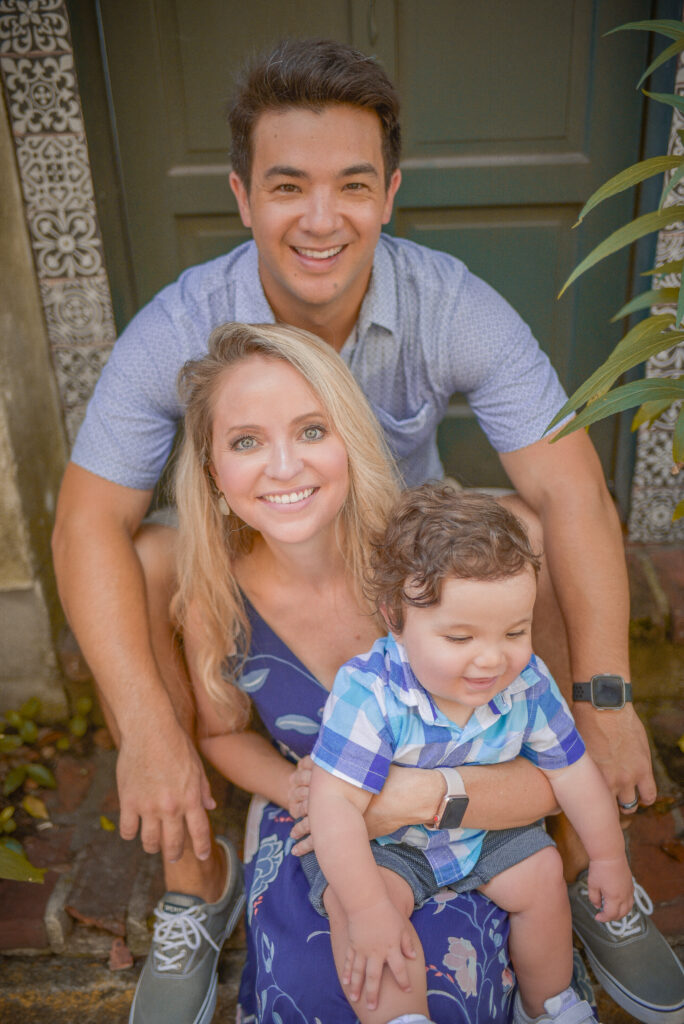Should I use an HSA for Retirement Planning?
"Should I use an HSA?"
In simple terms, a Health Savings Account, or “HSA,” is an account owned by an individual that can be used to pay for health care expenses, either now, or in the future. The accounts are eligible for those who have a High Deductible Health Plan and are funded with pre-tax dollars. If the funds are used to pay for qualified expenses, the funds can also be withdrawn tax free for those purposes. If leveraged appropriately, it will be the most tax efficient vehicle you will utilize for retirement planning.
Why participate in a Health Savings Account?
Fidelity conducted a study that estimates a 65 year old couple will need $300,000 earmarked to pay for healthcare expenses. This does not include costs for long-term care services. $300,000 of course represents true expenses, meaning the funds used to pay for those expenses will be net of taxes. If the bulk of your retirement savings are held in a traditional 401k or IRA, you will need close to $450,000-$500,000 in your account balance earmarked for healthcare costs alone. Therefore, many of my clients are leveraging the HSA as part of their overall retirement planning strategy, and I’ll summarize some of the benefits in more detail below.
1. You recognize a tax deduction today.
If you are single, the maximum contribution is $3,600 for 2021 ($3,650 for 2022).
If you are married and participating in a family plan for insurance, the maximum contribution is $7,200 for 2021 ($7,300 for 2022). If you are over 55, there is a $1,000 catch up contribution available as well. Unlike other tax efficient saving strategies, your adjusted gross income level does not phase you out of a contribution. Also, you don’t need to worry if you itemize your deductions or take the standard deduction come tax time, all contributions will reduce your taxable income. You will typically have the ability to make your HSA contribution before tax time. This is helpful as you could wait until March or April before making your contribution from the previous year after you estimate what your tax liability might be. Of course, consult with your tax advisor on federal and state tax impacts of making an HSA contribution.
2. Tax efficient growth
Once the contributions are made, the growth from year to year is not taxable. Unlike a taxable brokerage account (investing in stocks/bonds/mutual funds), you will not receive a 1099 for interest or capital gains purposes. Furthermore, the distributions are also tax free as long as they are used for qualified healthcare expenses. Unlike a normal retirement account, you don’t have to wait until 59 1/2 to take those qualified distributions. We will cover what a qualified healthcare expense is later, but think about the tax power of this vehicle. All other retirement vehicles that you take a tax deduction up front grows tax deferred, not tax free. Furthermore, tax free retirement vehicles like Roth IRAs, Roth 401ks, etc., don’t allow for a tax deduction up front! Therefore, the HSA has the best of both worlds from a tax standpoint in that it’s tax deductible, and grows tax free (as long as it’s used for qualified healthcare expenses).
3. Flexibility
A health savings account can be used for current medical expenses, or future medical expenses. This means you are not required to “empty out” your HSA at the end of the year, unlike it’s cousin, the Flexible Spending Account. This means that the HSA can be used in a year where you have abnormally high medical bills (major surgery, having a child, unexpected ER visit etc.), or can be used in future years, or better yet in your retirement years. Furthermore, there is no limit on the timing of reimbursement. Let’s say you had major surgery in 2021, but had some cash on hand to pay for the expenses. Therefore, instead of taking an HSA distribution, you decided to let it compound and invest it for the long term. Let’s say 15 years later, you needed to raise some cash. Well, let’s say that surgery set you back $5,000 out of pocket, you could reimburse yourself for that surgery that occurred more than a decade ago. This feature also allows you to grow the funds over time with compounding interest before reimbursing yourself. Make sure you have a process to archive receipts, which often times can be done with your HSA provider. The final component of flexibility is portability. If you leave an employer, the HSA always remains with you. You can even roll it over to a different HSA provider if your new company offers a plan that you want to participate in.
4. Growth opportunities
Given the ability to make contributions over your working years without the requirement of withdrawing funds, the HSA also offers an opportunity to accumulate a sizeable balance that can be used in your retirement years. Additionally, you can even invest those unused funds in a basket of securities such as mutual funds or ETFs for even more growth opportunities. Typically, the HSA provider will require some reserve amount that cannot be invested, let’s say $1,000. Once you exceed the $1,000 mark, you can choose from a menu of investment options that suit your time horizon and risk tolerance.
The tax deduction up front, the tax free growth, flexibility, and growth opportunity are all reasons why this vehicle is the most powerful vehicle you can utilize for retirement savings. We already know healthcare is going to be a major expense during retirement, so why not get the most bang for your buck when paying for those healthcare expenses and leverage the HSA?!
Who is eligible?
Anyone who is not enrolled in Medicare and is enrolled in a high deductible health plan is eligible to participate in an HSA. Most of you probably won’t worry about this, but you cannot be listed as a dependent on someone else’s tax return. Some may view the high deductible health plan requirement as a downside, but most high deductible plans still provide your preventative care like annual physicals, child/adult immunizations, screening services and other routine check ups with little to no out of pocket charge. The minimum annual deductible required to qualify as a high deductible is $1,400 for individual coverage and $2,800 for family coverage. Additionally, the maximum out of pocket expense plus deductible needs to be $7,000 for individual plans or $14,000 for family coverage. These are the basic requirements for the health insurance plan in order to be eligible for an HSA. As you can see, the deductible may be slightly higher, but the tax benefits of the HSA contribution alone can help offset that slightly higher out of pocket cost. Furthermore, that tax free compounded growth on your investments makes the high deductible plan worth it in many instances allowing you to build up that retirement health care nest egg.
What are qualifying medical expenses?
The list of qualifying medical expenses is very extensive. Chances are, anything that is non cosmetic is likely a qualified medical expense, including costs associated with dental and vision. If the HSA distribution is deemed non-qualified, the funds are taxable and subject to a 20% penalty if you are under the age of 65. Here is a link to a resource that provides a list of all qualified medical expenses: CLICK HERE
Outside of the traditional list, I wanted to point out a few that might not come to mind initially.
1. Long-term care services, and qualified Long-term Care Insurance premiums.
This is monumental, given the likelihood of retirees needing long-term care. The most recent statistic is 70% of those 65 and older will need some type of long-term care services during their lifetime. On average, women receive care slightly longer at 3.7 years vs. men at 2.2 years. Given the costs associated with long-term care, it is prudent to incorporate a plan well before you retire, whether it’s buying insurance, “self insuring,” or a combination of the two. For those who decide to buy insurance, you can withdrawal funds from your HSA tax free to pay the premiums, as long as it’s a qualified long-term care policy. Traditional, stand alone, long-term care policies without any cash value features are generally qualified policies, and HSA funds can be tapped to pay these premiums. Hybrid policies, however, are a bit more complex. These hybrid policies combine life insurance with a long-term care benefit, so if you never need long-term care services, typically your beneficiary will receive some sort of death benefit when you pass away. These policies have historically been considered NOT qualified, and HSA funds could not be used to pay these premiums tax free. However, companies are now identifying what is called a “separately identifiable long-term care premium,” which would be allowable as a qualified premium, and therefore HSA funds could be used in this situation. Consult with your insurance agent and tax advisors to ensure you don’t make any mistakes here.
If you decide not to buy insurance, or you plan on buying a small policy and “self insuring” for any additional long-term care costs, an HSA is a home run tool for this pool of dollars. Long-term care services are in fact qualified expenses, and HSA funds can be tapped to pay these costs. It’s estimated that a private room nursing home is upwards of $105k/year in the US (depending on where you live). If you needed to tap $105k/year to pay into a nursing home and only had tax deferred accounts on your balance sheet, such as a 401k, you would need to make distributions in the amount of $125k-$150k/year depending on your tax bracket. On the contrary, a $105k expense is a $105k distribution from an HSA given the tax free nature of these withdrawals.
I wrote an entire article on long-term care planning. If you are interested in reading more, you can use the link HERE.
2. Medicare premiums
This would apply to Medicare part B, C and D. However, Medigap policies are not considered qualified expenses. This is important because if you build up a substantial HSA balance, you could guarantee that you will have qualified medical expenses simply by way of being enrolled in Medicare. Additionally, there might be years where your Medicare premiums go up based on your income (think selling a business or real estate property, Required Minimum Distributions etc.), and you can use the HSA to offset that increase in premium.
What happens to your HSA when you die?
If your spouse is named as beneficiary when you pass away, your spouse will take over and continue the tax benefits as an HSA. Basically, there are no changes. However, when the HSA is passed to a non spouse (adult child or other beneficiary), the account is no longer an HSA and the full balance is taxable income for that beneficiary. Nobody has a crystal ball, but if you are building significant savings in an HSA, you might want to have a process to make regular reimbursements during retirement so you don’t create a tax windfall for your heirs. Given the flexibility in the timing of reimbursements, you can very easily go back over the years and pay yourself for medical bills incurred in the past. One other final disclaimer on that note. You cannot reimburse yourself from an HSA for expenses that were incurred before that HSA was established! If you set up an HSA in 2015, you can only reimburse yourself for expenses as long as that HSA was established (2015 and beyond).
Final Word
Medical costs are pretty much a given, so why not take advantage of the IRS tax code and maximize your ability to pay for them now and in the future. If you are young and healthy, I would strongly encourage the use of a high deductible health plan combined with an HSA. If you have concerns about the higher deductible given your medical history or unique situation, simply do the math on the tax savings of making an HSA contribution vs having a slightly higher out of pocket expense for the deductible. Most HSA providers even give you calculators to help you with that math. However, the real power is in the ability to build up a substantial nest egg with tax free compounding and investment opportunity within the HSA. This will allow for you to recognize some tax relief while you are working and contributing, but have another layer of tax free distributions to supplement your retirement income. This is especially true if you no longer qualify for Roth IRA contributions or don’t have a Roth 401k/403b option available at your employer. Even if are are closer to retirement, don’t let that discourage you. You can still max out the HSA contribution every year, invest the funds in a well diversified portfolio, and have a decent account balance to pay healthcare costs in your retirement years.
Be sure to consult with your tax advisors and financial planner before making any changes to your situation. If you would like to schedule a call with me to review your situation and figure out what strategy fits in your overall plan, you can book a “Mutual Fit” meeting by clicking the button below.













